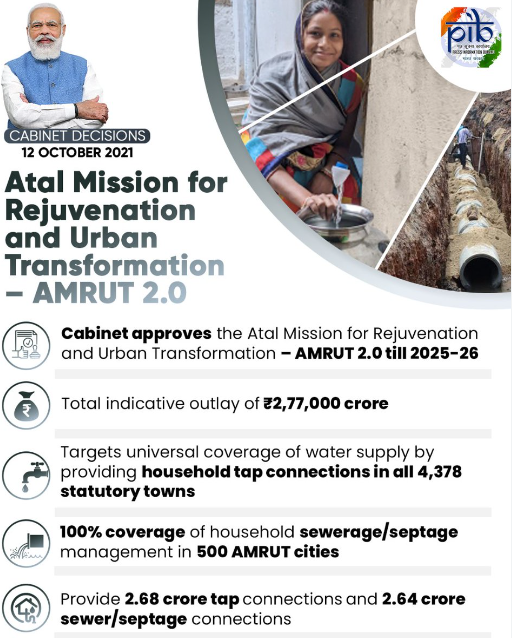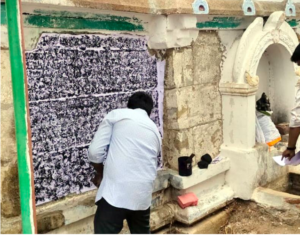5 August 2024 : Daily Current Affairs
1. Tourism has the potential to contribute to India’s achievement of being the third-largest Economy: Shri Gajendra Singh Shekhawat
(Source – https://pib.gov.in/PressReleseDetail.aspx?PRID=2041133 )
| Topic: GS3 – Indian Economy |
| Context |
|
Contribution of tourism to Indian economy:
- Economic Contribution: In 2021, tourism directly contributed approximately 2.78% to India’s GDP, with its indirect and induced effects bringing the total contribution to around 5.83%. Recent estimates indicate that tourism overall contributed about 5.8% to India’s GDP, highlighting its significant role in the nation’s economic framework.
- Employment Generation: Tourism supports around 40 million jobs in India, accounting for about 8% of total employment . This includes direct employment in hotels and restaurants and indirect jobs in sectors like transportation and crafts.
- Infrastructure Development: Government initiatives aim to invest over ₹2 lakh crore ($27 billion) in infrastructure projects, such as airports and highways, to boost connectivity to tourist destinations .
- Foreign Exchange Earnings: In 2019, India earned approximately $30 billion from international tourism, highlighting its potential to attract foreign investment and improve the trade balance .
- Promotion of Local Industries: Tourists’ spending supports local handicrafts and industries. For example, the handicrafts sector, heavily reliant on tourism, employs over 7 million artisans .
- Cultural Preservation: India has over 40 UNESCO World Heritage Sites, attracting cultural tourism and funding for preservation efforts, contributing to cultural heritage conservation .
- Innovation and Digitalization: Initiatives like the ‘Incredible India’ digital platform and enhanced online visa processes have improved tourist experiences and streamlined travel planning.
- Sustainable Development: Eco-tourism projects in states like Kerala and Uttarakhand promote sustainable practices, aligning with global climate goals and attracting eco-conscious travellers.
- Policy Support: The government plans to increase tourism’s contribution to GDP to 10% and create an additional 20 million jobs by 2025 through targeted policies .
- Regional Development: By promoting tourism in underdeveloped regions, such as the Northeast, the government aims to create economic opportunities and improve living standards across diverse areas .
| Practice Question: Discuss the potential of the tourism sector in contributing to India’s goal of becoming the third-largest economy in the world. Highlight the key challenges and opportunities in harnessing this potential. (250 Words /15 marks) |
2. Law Ministry report flags infrastructure challenges in country’s district courts
(Source – The Hindu, International Edition – Page No. – 4)
| Topic: GS2 – Indian Polity – Judiciary |
| Context |
|
Findings of the report:
- Overcrowding: Severe overcrowding in courtrooms; lack of space forces advocates, litigators, and parties to stand.
- Accessibility Issues: Bar rooms often located far from courtrooms, causing dissatisfaction among advocates.
- IT Infrastructure: Only 45% of judicial officers have electronic display facilities; 20% still under installation.
- Video Conferencing: 32.7% of district courts lack video conferencing facilities in jails.
- Fire Safety: 39% of judicial officers report no fire safety equipment in courtrooms.
| Infrastructure shortage in district courts: |
|
Implications for Justice Delivery:
Way Forward:
Steps taken by the government:
|
| Practice Question: Discuss the implications of inadequate infrastructure in district courts on the delivery of justice in India and suggest measures to address these challenges. (150 Words /10 marks) |
3. As in Kerala, local climate processes can worsen climate extremes
(Source – The Hindu, International Edition – Page No. – 7)
| Topic: GS3 – Environment – Disaster and disaster management |
| Context |
|
Early Warning Systems and Limitations
- Early warnings for natural hazards start with weather forecasts, but disaster management requires long-term climate risk outlooks extending a decade or more.
- Post-disaster analyses, like those of the Wayanad landslides, often fail to translate broad risk warnings into specific actions, such as implementing regulations to prevent deforestation and development in vulnerable areas.
- While some landslides can be mitigated by protecting regions like the Western Ghats, extreme events driven by climate change are inevitable.
Challenges in Predicting Disasters
- Models used for predicting disasters will always have imperfections. Accurate predictions require understanding local drivers that exacerbate climate effects.
- For example, a 2015 study highlighted that coastal sea surface temperatures significantly influence heavy rainfall along India’s west coast. This local effect can complicate the global warming and extreme weather relationship.
- Coastal warming, which can occur up to 10 days before heavy rain, is often missed by global models. Improving coastal observations and incorporating them into forecasts can enhance prediction accuracy.
Location-Specific Measures and Governance
- Adopting location-specific measures, such as legal protections for biodiversity, can help mitigate disaster impacts.
- Combining long-term climate predictions with hyperlocal risk assessments is crucial for effective disaster management.
- Cooperation between national and local governments in monitoring, reporting, and verification is essential. Budgetary provisions should consider the relationship between global warming and local events to ensure sustainable disaster mitigation.
Enhancing Predictive Models
- Global models offer seasonal outlooks and predictions for short (1-3 days), medium (3-10 days), and extended (2-4 weeks) ranges.
- These models have improved in predicting monsoon patterns, El Niño and La Niña events, and early extreme-event warnings.
- Researchers use techniques like downscaling to improve local predictions from global models. This involves using a high-resolution regional model to capture small-scale weather details missed by global models.
- Artificial Intelligence and Machine Learning (AI/ML) are increasingly used to enhance predictions. AI/ML approaches are cost-effective and faster than traditional high-resolution regional models.
Addressing Local Amplifiers of Extreme Events
- Tragedies such as the Wayanad landslides often recur because local amplifiers of extreme events are not adequately addressed.
- Changes in land use, such as urbanisation or deforestation, can significantly impact local weather patterns, leading to events like cloudbursts or hailstorms.
- Global models, with their coarse resolutions, often miss these local features, necessitating improved local data on weather and climate variables.
Conclusion
- Effective disaster management requires a robust data network to map and understand local extreme event amplifiers.
- Improving disaster resilience involves integrating long-term climate predictions with local risk assessments, enhancing model accuracy through AI/ML, and addressing local factors that exacerbate extreme events.
- Developing a comprehensive approach to disaster mitigation is crucial for weather-proofing the country and building climate resilience.
| Practice Question: Discuss the limitations of current early warning systems in disaster management and explain how integrating AI and hyperlocal data could improve predictions and mitigation strategies. (150 Words /10 marks) |
4. What do scientists make of the Budget?
(Source – The Hindu, International Edition – Page No. – 10)
| Topic: GS3 – Indian Economy –Government Budgeting |
| Context |
|
Overview of Key Budget Allocations and Initiatives
- The budget for the Department of Scientific and Industrial Research is set at ₹6,323.41 crore, reflecting a 10% increase from the previous year.
- Major Technology Missions:
- Previous terms of the government saw the initiation of advanced technology missions in supercomputing, cyber-physical systems, and quantum technologies.
- Increased focus on private sector participation in space and geospatial policies.
- India successfully landed a spacecraft on the moon, showcasing advancements in space technology.
- The 2024 Union Budget continues to emphasise ‘Viksit Bharat’, aiming to enhance research and development (R&D) in critical areas like climate-resilient agriculture, critical minerals, and energy-efficient technologies.
Sector-Specific Budget Provisions
- Space Economy: The 2024 Budget Aims to expand the space economy by 5 times in the next 10 years, a venture capital fund of ₹1,000 crore will be set up. It will support start-ups in the space sector.
- Biotechnology and Agriculture:
- Emphasis on transforming agricultural research to enhance productivity and climate resilience.
- Establishment of speed breeding platforms to accelerate crop development cycles.
- Investments in biotechnology to support high-risk start-ups, with the abolition of angel tax expected to encourage private sector investment.
- Clean Energy and Technology:
- Focus on clean energy, including solar and nuclear energy, with reduced taxation on critical raw materials.
- Industrial and Technological Infrastructure:
- Plans to establish “plug and play” industrial parks in 100 cities and develop industrial parks under the National Industrial Corridor Development Programme.
- These initiatives aim to create opportunities for indigenous technologies and enhance commercialisation efforts.
Concerns and Criticisms
- Funding Disparities:
- Despite the nominal increase in budget allocations, the actual expenditure may fall short of expectations due to inflation and increased competition among institutions.
- The allocation for R&D as a percentage of GDP remains a concern, with calls for higher funding to match global standards.
- Operationalization of Anusandhan National Research Fund (ANRF):
- The ANRF, with a corpus of ₹1 lakh crore, aims to support basic research and prototype development.
- There is ambiguity regarding the integration of prototype development with basic research, raising questions about the alignment of funding priorities.
- Private Sector Involvement:
- The budget’s focus on private sector-driven research and commercialization is viewed positively but also criticized for potentially sidelining basic research.
- The disparity in funding between state-run institutions and central institutes continues to be a concern, with calls for a more equitable distribution of resources.
Recommendations and Future Directions
- Enhancing Funding and Support:
- Increased government funding is necessary to support basic research and address the gap left by limited private sector investment.
- Improved funding mechanisms and operational clarity for initiatives could bridge existing gaps and promote more comprehensive research support.
- Strengthening Collaboration and Infrastructure:
- Enhancing collaborations between government, private sector, and academia can lead to better outcomes in R&D and innovation.
- Investments in infrastructure, such as industrial parks and research facilities, should be complemented by strategic planning and execution to maximise impact.
- Addressing Local and Sector-Specific Needs:
- Tailoring research and funding priorities to address local and sector-specific challenges can enhance the effectiveness of scientific and technological advancements.
- Ensuring that the benefits of research and development reach diverse areas of the economy and society is crucial for overall progress.
| Practice Question: Evaluate the Union Budget’s impact on India’s scientific research and technology sectors. Discuss the major investments and initiatives introduced, and analyse the concerns raised regarding funding adequacy and the operationalization of research programs. (150 Words /10 marks) |
5. A look at how 18th lok sabha is the India’s oldest
(Source: Indian Express; Section: Express Network; Page: 12)
| Topic: GS2 – Governance |
| Context: |
|
Analysis of the news
India’s Aging Politicians: A Growing Concern
- The recent general election has resulted in the oldest-ever Lok Sabha, with the average age of MPs climbing to 56.
- This trend has sparked concerns about the disparity between the average age of India’s politicians and its population, resulting in the underrepresentation of the youth in Parliament.

Current situation:
- In 1952, when the first Lok Sabha was elected, the average age of MPs was 46.5 years. The first House also had a record 82 MPs aged 40 or under and no MPs older than 70. Only 26% of members were below 40 years
- Currently, the 18th Lok Sabha has only 25 MPs under 35, with 380 MPs aged 51 or older, highlighting the increasing age gap. Only 12% are below 40 years.
- Before the 2024 Lok Sabha polls, the highest average age was recorded after the 1999 elections at 55.5 years.
- This time, the average age of the MPs in the 18th Lok Sabha hit a record high of 56; there are now 380 MPs who are 51 or older.
- The number of MPs aged 35 or less has consistently declined since the first Lok Sabha, raising concern about the lack of youth representation.
- The average age of the Indians is 27.8 years, according to the 2011 census, reflecting a significant difference between the age of the population and their representatives.

How MPs’ minimum age was decided
- The Constituent Assembly debated the minimum age requirement for MPS, with B R Ambedkar suggesting 25 years for the Lok Sabha and 35 for the Rajya Sabha.
- Some members argued for a lower age requirement, citing examples of young achievers in history, while others emphasized the need for maturity and experience in politics.
There should be efforts to increase youth representation and lower the minimum age requirement to bring fresh perspectives to parliament.
6. Going after the Weeds
(Source: Indian Express; Section: Explained; Page:13)
| Topic: GS3 – Science and Technology |
| Context: |
|
Analysis of the news:
Breakthrough in Sustainable Farming
- There has been a significant breakthrough in developing the herbicide Imazethapyr tolerant rice and wheat variety, paving the way for more sustainable and environmentally friendly farming practices.
- This innovation can potentially reduce water usage, minimize environmental pollution, and decrease labour costs, making farming more efficient and productive.
New Varieties and hybrids
- Two basmati varieties (Pusa Basmati 1979 and Pusa Basmati 1985) and two non-basmati rice hybrids (Sava 134 and Sava 127), developed by the Indian Agricultural Research Institute (IARI) and Savannah Seeds Pvt. Ltd respectively.
- Mahyco Pvt. Ltd is launching wheat varieties (goal and Mukut) that can also tolerate Imazethapr, further expanding the scope of this technology.
Weed control challenges
- The traditional farming methods include flooding fields and repeated ploughing to control weeds, which consumes large amounts of water and labour.
- This approach not only wastes resources but also harms the environment, making it essential to explore alternative solutions.
Herbicide Tolerant solutions
- Direct-seeded Rice and Zero-Tillage wheat technologies replace water and ploughing with a chemical herbicide (Imazethapyr) to control weeds.
- DSR and ZT wheat also reduce environmental pollution by eliminating the need for crop residue burning.
New Variety
- The new variety and hybrids are not genetically modified but have a mutated ALS gene that makes them resistant to Imazethapyr.
- It addresses concerns about the safety and environmental impact of GM crops.
The adoption of DSR and ZT technologies is expected to rise, providing a more sustainable future for rice and wheat farming.
Prelims Facts
1. National Centre for Good Governance (NCGG) successfully concludes the 4th Capacity Building Program for the Civil Servants of Sri Lanka
(Source – https://pib.gov.in/PressReleseDetail.aspx?PRID=2041087 )
| Context |
|
The National Centre for Good Governance (NCGG):
- Establishment: The National Centre for Good Governance (NCGG) was established in 2014 as an apex institution in India dedicated to governance reforms and capacity building.
- Objective: to promote good governance practices by fostering a culture of excellence, transparency, and accountability in public administration.
- Training and Capacity Building: NCGG provides training to civil servants and policymakers in India and other developing countries, focusing on areas such as public policy, leadership, and e-governance.
- Research and Policy Support: It conducts research on governance issues and offers policy recommendations to enhance administrative efficiency and service delivery.
- International Collaboration: NCGG collaborates with various international organisations and countries to share best practices in governance and public administration.
2. ASI to copy stone inscriptions onto paper in Tiruppur
(Source – The Hindu, International Edition – Page No. – 3)
| Context |
|
Inscriptions of Tiruppur:

- Historical Significance: Tiruppur, located in Tamil Nadu, India, is known for its ancient inscriptions that provide insights into the region’s historical and cultural heritage.
- Chola Dynasty: Many inscriptions date back to the Chola dynasty (9th to 13th centuries), reflecting administrative, religious, and economic aspects of the period.
- Temples: Inscriptions are often found in temples, detailing donations, land grants, and contributions made by kings, merchants, and local elites.
- Language: The majority of inscriptions are in Tamil, though some are in Sanskrit. They use the Tamil-Brahmi script and later the Vattezhuthu script.
- Notable Sites: Key sites with inscriptions include the Kalyana Venkateshwara Temple, Thalishwarar Temple and various ancient Shiva temples.
- Cultural Insights: The inscriptions reveal details about trade, social structure, and religious practices prevalent in the region.
| The ‘Estampage’ Method: |
|
|
3. Sara Abraham, doyenne of Indian Art, passes away
(Source – The Hindu, International Edition – Page No. – 6)
| Context |
|
Contribution of Sara Abraham to contemporary Indian art:
- Innovative Approach: Sara Abraham is known for her experimental techniques in contemporary Indian art, blending traditional and modern forms.
- Mixed Media: She often uses mixed media, including photography, painting, and installation art, to explore themes of identity, memory, and urban life.
- Social Commentary: Abraham’s work frequently addresses social issues, offering commentary on gender, migration, and cultural dislocation.
- Exhibitions: Her art has been featured in prestigious exhibitions and galleries in India and internationally, enhancing the global visibility of contemporary Indian art.
- Educational Influence: Sara Abraham was involved in teaching and mentoring, influencing the next generation of artists through her academic roles.

4. In govt’s 100 day plan: Launching Rs. 5000 cr projects in AMRUT 2.0s
(Source: Indian Express; Section: Govt & Politics; Page: 07)
| Context: |
| Under the Atal Mission for rejuvenation and urban transformation (AMRUT) 2.0, cities are likely to initiate projects worth Rs 5,000 crore, covering water supply, sewage treatment, and rejuvenation of water bodies and parks, as a part of the 100-day agenda of the government. |
Analysis of News:

Analysis of News:
AMRUT 2.0 Initiative
- The scheme was launched on 01 October 2021 for the period of 05 years, i.e. from the financial year 2021-22 to the financial year 2025-26.
- It aims to provide universal water supply coverage through functional taps to all households in all the statutory towns in the country and coverage of sewerage/septage management in 500 cities.
- Its estimated outlay is Rs. 2.99 lakh crore, with the central assistance of R. 66,750 core.
100 Day Agenda
- Under the 100-day agenda, cities also aim to establish sewage treatment plants (STPs) with a total capacity of 500 million litres daily (MLD) that would benefit around 6 lakh households and 150 MLD water treatment plants for 2 lakh households.
- It includes approval of long-pending proposals, including notification of the Delhi Master Plan 2041 and the incubation of eight greenfield cities to Rs 1,000 crore each in the country, as the 15th Finance Commission recommended.





